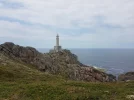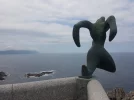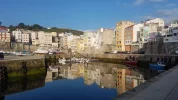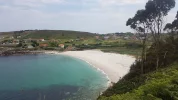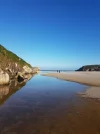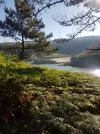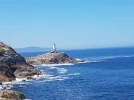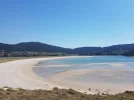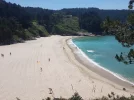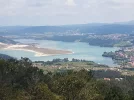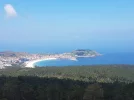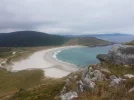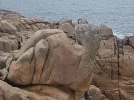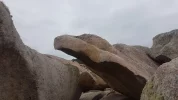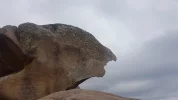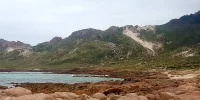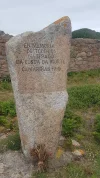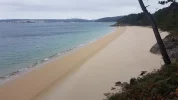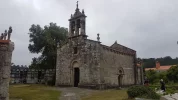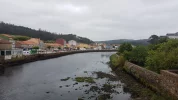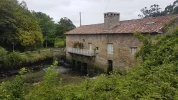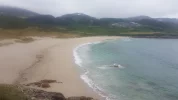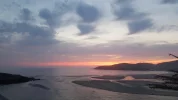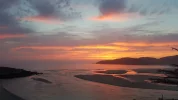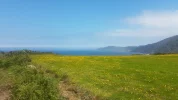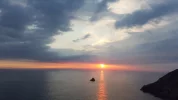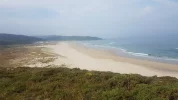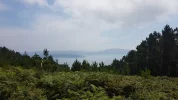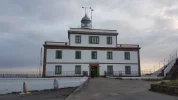markgrubb
Member
- Time of past OR future Camino
- Camino Frances 2016
Camino Del Norte 2017
Camino Mozarabe (Almeria) 2019
Camino Portuguese 2019
I’m writing an account of my trip this summer to O Camiño dos Faros, the Gallego name for the Route of the Lighthouses. In the Camino Pilgrim Discussion Group on Facebook it was mentioned recently that the route will be adopted next year with guidebooks etc so it is likely to become much more popular. I thought I’d write to share my experiences for anyone thinking of doing it.
O Camino dos Faros is 203 km long and divided into 8 stages. This means an average length of 25km or 15 to 16 miles each day. I've walked the Caminos Frances, Camino del Norte and Camino Mozarabe and the 8 days of this walk were harder than any stretch of those routes. The route is difficult, mainly for the terrain it passes through. I normally walk at 5km/hr but in this route was frequently travelling at 3 to 3.5 km/hr. The route really does hug the coast as much as possible. I'm someone who doesn't like heights and had read a lot before of dizzying drops but at no moment did I feel unsafe or in any danger on the path. Certainly there were a few moments of how the hell does the path go there but I was never worried. The path is marked with green dots or footprints and can be difficult to follow at times. Marking was poor often at critical junctions. There were also a lot of sections that were overgrown and though the path could be seen you had to wade through ferns, gorse and brambles that were up to waist or even above head height. There are also lots of sections where you have to pick your way across rocks or soft sand. There is a fair bit of minor scrambling where you have to pull yourself up.
The landscape is really varied and the beauty is jaw dropping at times.
The climate is humid and though we only had one really hot day I got through more water than usual. Some stages have little or no resources en route so you need to plan ahead and carry food and liquids for lunch.
The people of the area were unfailingly helpful and encouraging(apart from one surly hotel owner) often going out of their way to help. There were about 8-10 of us doing the route at the same time and I was able to pair up and share accommodation. Over half of the group dropped out or ended up doing partial stages.
Accommodation was generally easy to find when I went at the end of June though if you wish to book there are contact details on the website above.
Getting there
The route starts in Malpica and the nearest airport is A Coruña which is about 30 miles away. There are 3 buses a day from the bus station in A Coruña to Malpica. On weekdays, the first one is at 11 am and the last one is at 6.15m. The only other possibility is an expensive taxi.
Resources
The website O Ruta dos Faros http://www.caminodosfaros.com/en/ is excellent with a wealth of detail about the route, accommodation and places to eat. You can download Wikiloc tracks for the entire route. The route is marked in green dots or footprints but can be tricky to navigate and a lot of key junctions seem to be missing markings so back up with help such as Wikiloc is pretty much essential.
Having some Spanish is a big help. Negotiating taxis and asking for rooms in one village would have been really hard without it. I have a good level of Spanish so didn’t really speak English at all in the 8 days.
O Camino dos Faros is 203 km long and divided into 8 stages. This means an average length of 25km or 15 to 16 miles each day. I've walked the Caminos Frances, Camino del Norte and Camino Mozarabe and the 8 days of this walk were harder than any stretch of those routes. The route is difficult, mainly for the terrain it passes through. I normally walk at 5km/hr but in this route was frequently travelling at 3 to 3.5 km/hr. The route really does hug the coast as much as possible. I'm someone who doesn't like heights and had read a lot before of dizzying drops but at no moment did I feel unsafe or in any danger on the path. Certainly there were a few moments of how the hell does the path go there but I was never worried. The path is marked with green dots or footprints and can be difficult to follow at times. Marking was poor often at critical junctions. There were also a lot of sections that were overgrown and though the path could be seen you had to wade through ferns, gorse and brambles that were up to waist or even above head height. There are also lots of sections where you have to pick your way across rocks or soft sand. There is a fair bit of minor scrambling where you have to pull yourself up.
The landscape is really varied and the beauty is jaw dropping at times.
The climate is humid and though we only had one really hot day I got through more water than usual. Some stages have little or no resources en route so you need to plan ahead and carry food and liquids for lunch.
The people of the area were unfailingly helpful and encouraging(apart from one surly hotel owner) often going out of their way to help. There were about 8-10 of us doing the route at the same time and I was able to pair up and share accommodation. Over half of the group dropped out or ended up doing partial stages.
Accommodation was generally easy to find when I went at the end of June though if you wish to book there are contact details on the website above.
Getting there
The route starts in Malpica and the nearest airport is A Coruña which is about 30 miles away. There are 3 buses a day from the bus station in A Coruña to Malpica. On weekdays, the first one is at 11 am and the last one is at 6.15m. The only other possibility is an expensive taxi.
Resources
The website O Ruta dos Faros http://www.caminodosfaros.com/en/ is excellent with a wealth of detail about the route, accommodation and places to eat. You can download Wikiloc tracks for the entire route. The route is marked in green dots or footprints but can be tricky to navigate and a lot of key junctions seem to be missing markings so back up with help such as Wikiloc is pretty much essential.
Having some Spanish is a big help. Negotiating taxis and asking for rooms in one village would have been really hard without it. I have a good level of Spanish so didn’t really speak English at all in the 8 days.
Last edited:




